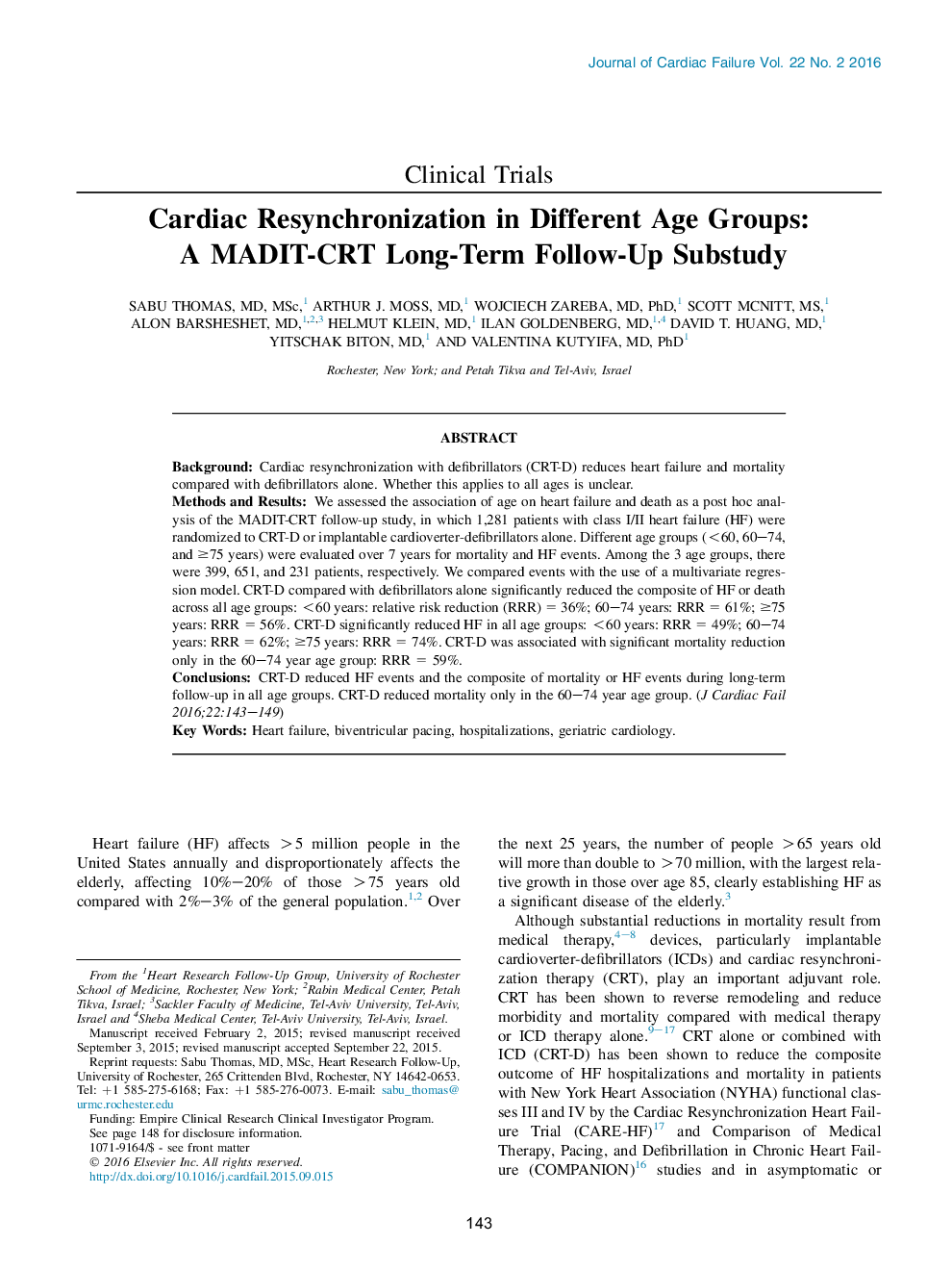| Article ID | Journal | Published Year | Pages | File Type |
|---|---|---|---|---|
| 2958458 | Journal of Cardiac Failure | 2016 | 7 Pages |
•It is unclear whether CRT-D reduces heart failure and mortality in all age groups.•We assessed the association of age on outcomes in the MADIT-CRT study.•CRT-D reduced HF events in all age groups.•CRT-D did not reduce mortality in those aged <60 or >74 years.
BackgroundCardiac resynchronization with defibrillators (CRT-D) reduces heart failure and mortality compared with defibrillators alone. Whether this applies to all ages is unclear.Methods and ResultsWe assessed the association of age on heart failure and death as a post hoc analysis of the MADIT-CRT follow-up study, in which 1,281 patients with class I/II heart failure (HF) were randomized to CRT-D or implantable cardioverter-defibrillators alone. Different age groups (<60, 60–74, and ≥75 years) were evaluated over 7 years for mortality and HF events. Among the 3 age groups, there were 399, 651, and 231 patients, respectively. We compared events with the use of a multivariate regression model. CRT-D compared with defibrillators alone significantly reduced the composite of HF or death across all age groups: <60 years: relative risk reduction (RRR) = 36%; 60–74 years: RRR = 61%; ≥75 years: RRR = 56%. CRT-D significantly reduced HF in all age groups: <60 years: RRR = 49%; 60–74 years: RRR = 62%; ≥75 years: RRR = 74%. CRT-D was associated with significant mortality reduction only in the 60–74 year age group: RRR = 59%.ConclusionsCRT-D reduced HF events and the composite of mortality or HF events during long-term follow-up in all age groups. CRT-D reduced mortality only in the 60–74 year age group.
